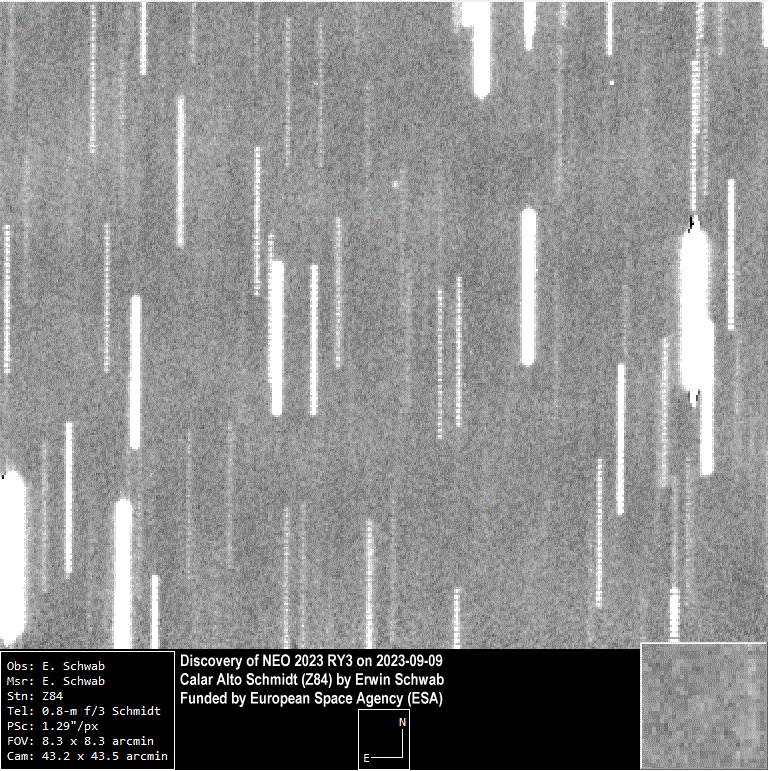Discovery of the near-Earth asteroid 2023 RY3 using the Schmidt Telescope at Calar Alto, Spain
On 2023-09-09 Erwin Schwab was searching for the lost comet P/2002 T6 (NEAT-LINEAR) using an ESA-funded Telescope at Calar Alto, Spain. Instead of the comet, which was not observed since about 20 years, he dedected an unknown fast moving object.
The object immediately was reported and added to the Confirmation Page of the Minor Planet Center. Follow-up observations could be carried out by other observatories in Tautenburg (Germany), Siding Spring (Australia) and Visnjan (Croatia). After some nights of observation it turned out to be a Near-Earth Object (NEO) about 100 meters across. The new asteroid was announced with the designation 2023 RY3 and published in the Minor Planet Electronic Circular [1].
The used telescope is a Schmidt-Type-Reflector with an aperture of 0.8 meter. 2023 RY3 is the second NEO, discovered with this telescope since it has been shipped in 1975 from Hamburg-Bergedorf Observatory to Calar Alto, Spain. The first discovered NEO was 2022 DX, also found by Schwab in February 2022 [2], [3]. Since 2016, the telescope operation has been funded by the European Space Agency (ESA) and served for Planetary Defence. Head of ESA’s Planetary Defence Office is Richard Moissl.

Discovery of NEO 2023 RY3 on 2023-09-09, analyzed with the software Tycho Tracker. The shown movie contains three frames only, each frame has an integrated exposure time of 24 minutes (24x60s). 2023 RY3 is the point-shaped object moving from north to south. It is a crop out of the total field of view.
© Schwab / ESA
[1] 2023 RY3 = Sc00195 (Sept. 11.46 UT) MPEC 2023-R124
[2] ESA Newsletter March 2022
[3] E. Schwab, 2023: „2022 DX – die erste NEO-Entdeckung am Schmidt Teleskop auf dem Calar Alto“, VdS-Journal für Astronomie 84, S. 76
